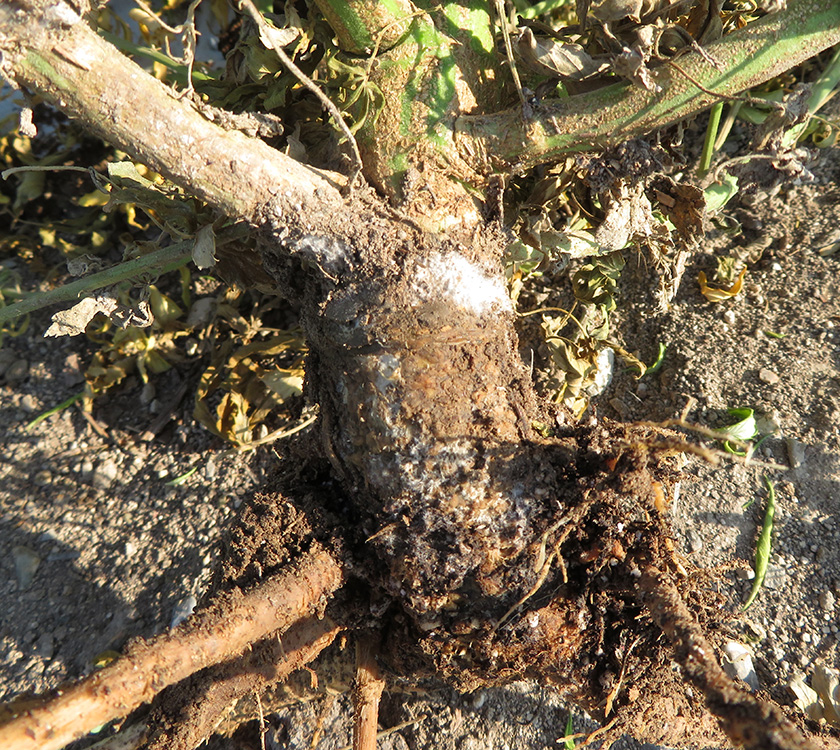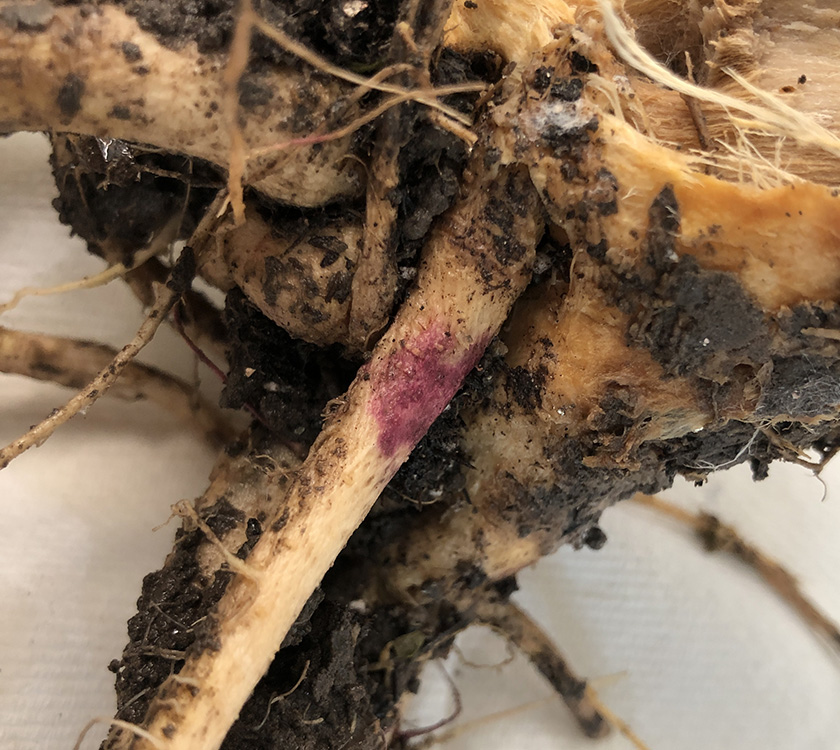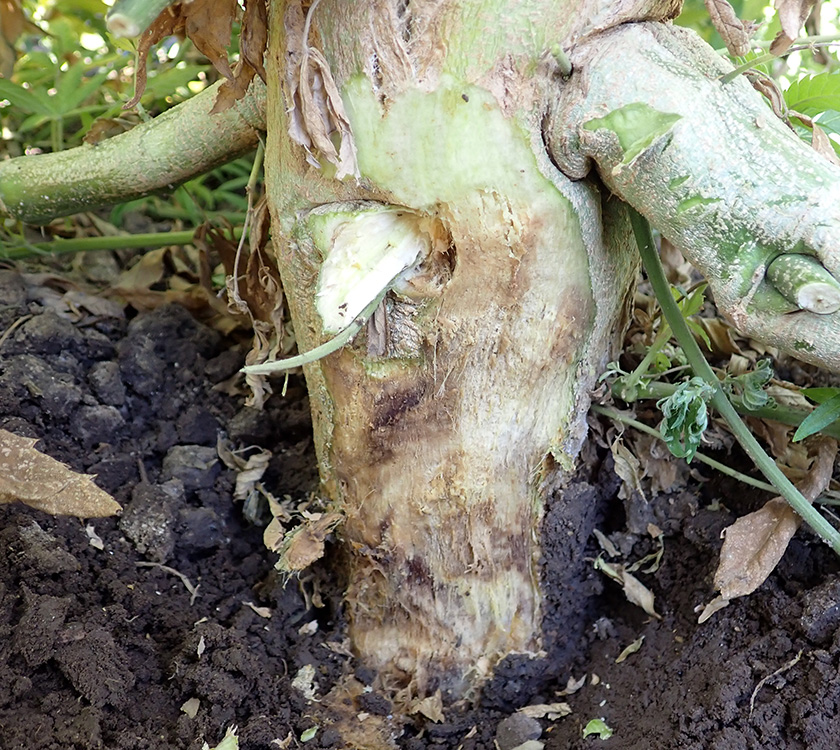Fusarium Crown Rot
Fusarium solani (primarily), F. equiseti, and F. graminearum
Hosts
- Greenhouse and field-grown hemp
- Many vegetable crops
Symptoms
Roots are affected by rotting and becoming necrotic (brown). The tissue at the crown discolors and becomes soft right above the soil line. Plants eventually wilt and die. Symptoms can look similar to Fusarium wilt, but with Fusarium wilt, there will be no discoloration of the crown on the outside of the stem and in the phloem, and no root rot.
Disease Cycle
The Fusarium species that cause this disease are soilborne pathogens. They each can survive in the soil for many years by living as a saprophyte and feeding on plant debris, or as long-lived chlamydospores (resting spores). As a pathogen, F. solani strains can be host-specific but they can survive on roots of other plants such as weeds, making it very difficult to eliminate the pathogen once it has been introduced into a field. It is not known which strain infects hemp in Utah. Most strains grow best at temperatures between 77-86°F.
Time for Concern
Throughout the growing season.
When and Where to Scout
- Scout plants biweekly, looking for wilted plants and stem-rotting just above the soil line.
Threat Level
Medium.
Occurrence in Utah
Crown rot has been commonly found in Utah hemp fields that are flood irrigated, overwatered, or not rotated to a different crop.
Management
In field-grown hemp, management requires prevention, because no fungicides are available.
- Remove infected plants, including roots, in a timely manner.
- Clean field equipment before taking it into another field to avoid the spread to new locations.
- Rotate hemp with other crops to prevent buildup of pathogens in the soil. Avoid rotating with tomatoes and other susceptible crops.
- In greenhouses, use new pots and trays, or disinfect reused pots with a 10% -15% bleach solution for about an hour, followed by a good rinse with water.
- Prepare potting mix on a plastic tarp to prevent contact with bare ground that may contain soilborne pathogens.
Look-alikes
Pythium crown rot.
Photo Credits
All photos: USU Extension IPM Program







